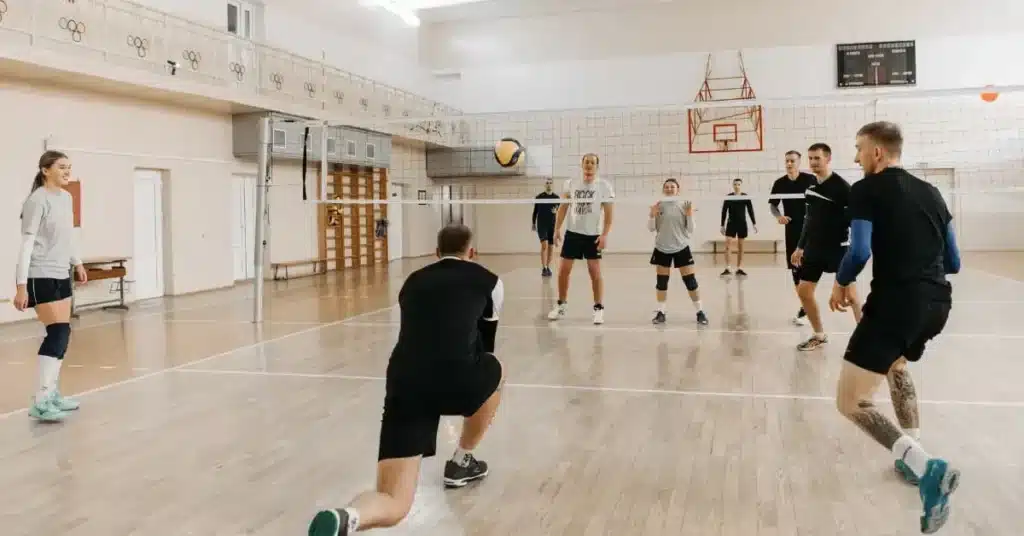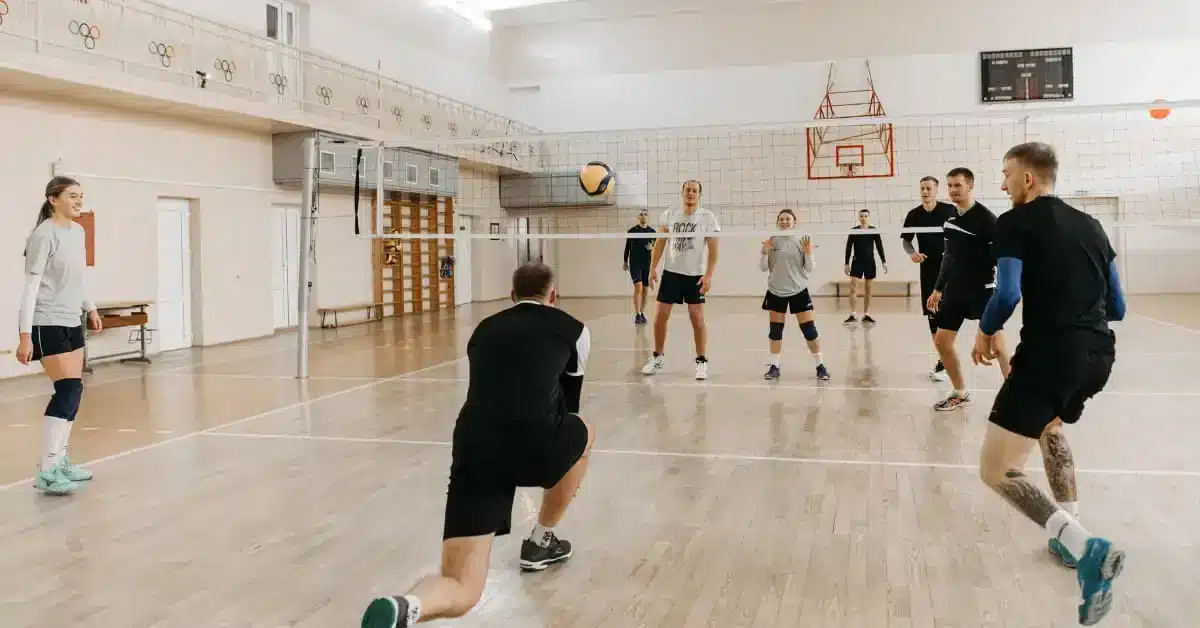Do You know What Does Side Out Mean in Volleyball?
Volleyball is a fast-paced and exciting sport with its own unique terminology and rules. One of the key terms that every volleyball player and fan should understand is “side out.”
In this article, we will delve into the meaning of “side out,” its historical significance, and its role in modern volleyball. We will also explore how side out scoring works and its impact on the game.
What Does Side Out Mean in Volleyball?
A side-out in volleyball occurs when the team that served the ball fails to win a point on the play, resulting in a loss of serve to the opponent.
Understanding “Side Out” in Volleyball
Definition of Side Out
“Side out” in volleyball refers to the situation where the receiving team wins the rally, thereby gaining the right to serve. This term is rooted in the earlier scoring system of volleyball, where a team could only score points when they were serving. The concept of a side out signifies a shift in service from one team to the other.

Historical Context
The term “side out” originates from the early days of volleyball when the sport followed a side out scoring system. In this system, only the serving team could score a point. If the receiving team won the rally, they would not score a point but would earn the right to serve, hence the term “side out.”
The Evolution of Scoring Systems
Side Out Scoring System
The side out scoring system was used in volleyball from its inception until the late 1990s. Under this system, matches could be lengthy because points were only scored by the serving team. A rally won by the receiving team resulted in a side out, granting them the serve but not a point.
Example of Side Out Scoring
To illustrate, let’s consider a match scenario under the side out scoring system:
- Team A is serving.
- Team B wins the rally.
- Team B does not score a point but gains the right to serve.
- Team B now serves, and the process repeats.
Rally Scoring System
In the late 1990s, the rally scoring system was introduced and eventually became the standard for volleyball. Under this system, points are awarded on every rally, regardless of which team is serving. This change was made to shorten match durations and increase the excitement of the game.
Example of Rally Scoring
Under the rally scoring system, the same scenario would play out differently:
- Team A is serving.
- Team B wins the rally.
- Team B gains a point and the right to serve.
- Team B now serves, and the process repeats.
Impact of Scoring System Change
The shift from side out scoring to rally scoring significantly impacted the game of volleyball. Matches became shorter and more predictable in duration, which was beneficial for players, coaches, fans, and broadcasters. The rally scoring system also made each rally more critical, adding to the excitement and intensity of the game.
How Long is a Volleyball Game?
Top 10 Best Volleyball Setters in the World
Tallest Women’s Volleyball Players Of 2024
How Side Out Works in Modern Volleyball
Role of Side Out in Rally Scoring
Even though volleyball now uses the rally scoring system, the concept of a side out remains relevant. A side out still refers to the action of the receiving team winning the rally and gaining the right to serve. However, unlike the side out scoring system, the receiving team also earns a point.
Strategies for Achieving Side Outs
Teams employ various strategies to achieve side outs, as gaining control of the serve can be a critical aspect of the game. These strategies include:
Effective Serve Reception
A strong serve reception is crucial for achieving side outs. The receiving team must accurately pass the ball to the setter to set up a successful attack.
Powerful Attacks
Executing powerful and well-placed attacks can help the receiving team win the rally and achieve a side out. Teams often focus on quick and strategic offensive plays to catch the serving team off guard.
Solid Blocking and Defense
A robust defensive setup, including effective blocking and digging, can help the receiving team counter the serving team’s attacks and win the rally.
Importance of Side Outs in Volleyball
Maintaining Momentum
Achieving a side out can be a game-changer in volleyball, as it not only awards a point to the receiving team but also shifts the momentum. Controlling the serve can allow a team to build a series of successful plays and extend their lead.
Psychological Impact
Gaining a side out can also have a psychological impact on both teams. For the receiving team, it can boost confidence and morale, while for the serving team, losing the serve can be a setback that requires mental resilience to overcome.
Side Out Techniques and Drills
Serve Reception Drills
To enhance side out performance, teams often practice serve reception drills. These drills focus on passing accuracy, communication, and positioning.
Example Drill: Three-Person Serve Receive
- Three players (usually two passers and a libero) position themselves to receive serves.
- The coach or a designated server delivers serves of varying speeds and angles.
- The receiving players focus on accurate passes to the setter.
Attack Drills
Practicing attacks is essential for converting serve receptions into successful side outs. These drills emphasize timing, placement, and power.
Example Drill: Hit and Cover
- The team sets up in their offensive formation.
- The setter delivers sets to hitters from various positions.
- Hitters practice attacking different zones of the court, while the rest of the team covers in case of a block or dig.
Defensive Drills
Strong defense can lead to side outs by countering the opponent’s attacks. Defensive drills focus on blocking, digging, and transitioning to offense.
Example Drill: Block and Transition
- Front-row players practice blocking against simulated attacks.
- After a block, the team transitions quickly to a counter-attack, aiming to win the rally and achieve a side out.
Side Out in Beach Volleyball
Differences in Side Out Mechanics
Beach volleyball, played with two players per team, also incorporates the concept of a side out. The smaller team size and different court dimensions lead to unique side out dynamics.
Strategies for Side Outs in Beach Volleyball
- Serve Receive: In beach volleyball, serve receive is even more critical due to the limited number of players. Accurate passing is essential to set up offensive plays.
- Communication: Effective communication between partners is crucial for coordinating movements and executing plays.
- Versatility: Players must be versatile, as they need to perform multiple roles, including serving, receiving, setting, and attacking.
Common Questions about Side Outs
A side out in volleyball refers to the receiving team winning the rally and gaining the right to serve. In modern volleyball, the receiving team also scores a point when they achieve a side out.
Under the side out scoring system, only the serving team could score points. If the receiving team won the rally, they would gain the right to serve but not score a point. This system was used until the late 1990s.
The rally scoring system was introduced to shorten the duration of matches and make the game more exciting. Under this system, points are awarded on every rally, regardless of which team is serving.
Achieving a side out can shift the momentum of the game, as it allows the receiving team to gain the serve and score a point. It can also have a psychological impact, boosting the receiving team’s confidence while challenging the serving team’s resilience.
Teams can use various strategies to achieve side outs, including effective serve reception, powerful attacks, and solid defense. Practicing serve reception, attack, and defensive drills can enhance a team’s ability to achieve side outs.
Conclusion
The concept of a side out is integral to the game of volleyball, both historically and in its modern form.
While the transition from the side out scoring system to the rally scoring system has changed how points are awarded, the fundamental importance of gaining the serve remains.
Understanding what a side out means, its historical context, and its impact on the game provides valuable insights into the strategies and dynamics of volleyball.
Whether you are a player, coach, or fan, appreciating the significance of side outs can enhance your understanding and enjoyment of this exhilarating sport.
